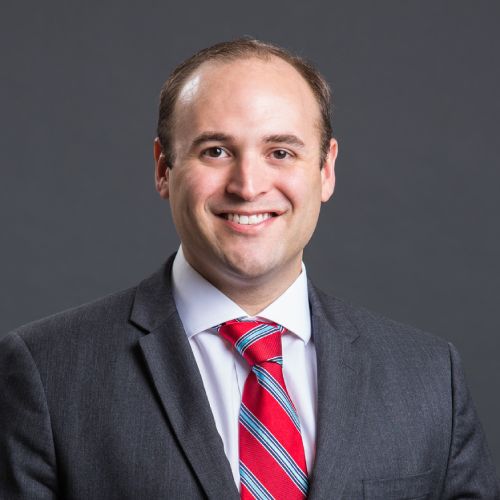
If you’ve been seriously hurt by a doctor, nurse, or hospital anywhere in Florida, you may be wondering: How long does a medical malpractice case take, and what does the process involve?
Although timelines can vary depending on the facts of the case, most claims in Florida take between 18 and 36 months to resolve. That might seem like a long time when you’re dealing with medical bills and a life turned upside down—but there’s a reason behind this timeline.
In this blog post, we’ll walk through the stages involved in a typical medical case and how the experienced medical malpractice attorneys at James Horne Law, PA, fight for you every step of the way.
How Long Does a Medical Malpractice Case Take: An Overview
Medical malpractice cases in Florida are highly regulated and follow a detailed legal procedure to protect patients and providers alike. Here’s a breakdown of each phase in the process.
Step 1: Gathering Medical Records & Expert Review
Every case begins by asking, What exactly went wrong and why?
For claims filed in Florida, attorneys must gather all relevant medical records, such as:
- Hospital admission and discharge records;
- Lab results, imaging scans, testing reports; and
- Physician notes, prescriptions, and surgical charts.
A licensed Florida medical expert trained in the same specialty as the provider reviews these documents. Under Florida law, an expert’s written opinion is legally required to file a formal claim. This expert will determine whether your care fell below the accepted medical standard and whether that breach directly caused your injuries.
The team at James Horne Law, PA works quickly to secure your medical records and coordinate with trusted Florida-licensed experts to build a strong foundation for your claim.
Step 2: Pre-Suit Notice to the Healthcare Provider
Before filing a medical malpractice lawsuit, Florida mandates a 90-day pre-suit investigation period. During this time, your attorney sends the healthcare provider a detailed notice of intent, including:
- A summary of the claim and allegations,
- The supporting expert affidavit, and
- An opportunity for the provider to investigate or settle.
This Florida-specific notice period gives providers time to evaluate the claim’s validity and potentially reach a resolution without litigation.
Step 3: Filing a Malpractice Lawsuit & Entering Discovery
If no settlement results from the pre-suit process, the case enters formal litigation by filing a civil complaint with the Circuit Court in the county where the alleged malpractice occurred—whether that’s Jacksonville, Tampa, Miami, Orlando, or any other Florida jurisdiction.
This kicks off the discovery phase, where both sides exchange key information. This may involve:
- Depositions of doctors, nurses, and hospital staff;
- Requests for internal medical policies and communications; and
- Presentation of expert witness testimony.
How long does a medical malpractice lawsuit take once it’s filed? That depends on the complexity of the case, how the defense responds, and how congested the local court calendar is. Discovery alone can take several months, especially when multiple parties or medical facilities are involved.
James Horne Law manages the litigation process from start to finish, leveraging discovery to uncover the facts and strengthen your position for settlement or trial.
Step 4: Negotiation and Mediation
Most Florida medical malpractice claims are resolved outside the courtroom, often after discovery.
This is where we will enter negotiations or formal mediation, where a neutral third-party mediator helps guide discussions. At this point, both sides have access to critical case evidence, allowing for:
- More accurate settlement valuations,
- Conversations about liability and damages, and
- Avoidance of the risks and costs of trial.
Many successful settlements occur during this phase, particularly in regions like South Florida, where court congestion can delay trials for months. Our team negotiates assertively on your behalf to pursue fair compensation while minimizing the emotional toll of litigation.
Step 5: Going to Trial (If Necessary)
If mediation fails, your case proceeds to trial in the appropriate Florida Circuit Court.
At trial, we’ll present evidence showing that:
- The provider breached the standard of care;
- This breach directly caused your injuries; and
- You deserve compensation for medical expenses, pain, lost income, and future care.
Trials vary in length. Some take only a week, while complex cases may last up to three weeks. A jury will ultimately decide whether malpractice occurred and, if so, award damages.
Know Florida’s Statute of Limitations
Florida law limits the window in which you can file a medical malpractice lawsuit to two years from the date of discovery of the injury. However, under the statute of repose, you cannot file any medical negligence claim more than four years after the alleged negligent act, even if you discovered the harm later.
Because Florida also requires detailed pre-suit steps, acting quickly and consulting with a skilled attorney as soon as you suspect malpractice is crucial.
Get the Answers and the Justice You Deserve
At James Horne Law, PA, we proudly represent individuals across Florida harmed by a medical professional’s negligence. Whether in Tampa, Orlando, Jacksonville or anywhere in the Sunshine State, our experienced legal team is here for you.
Don’t wait. Florida law limits the time you have to file your claim. Contact us today for a free consultation and take the first step toward justice.



